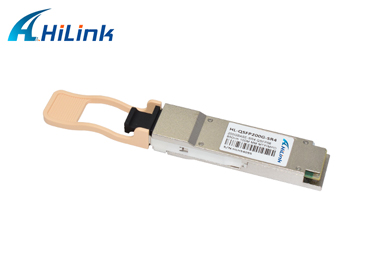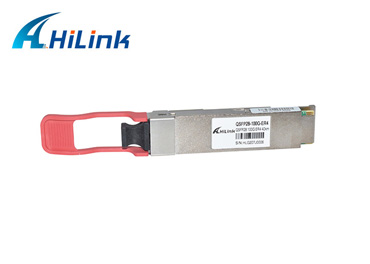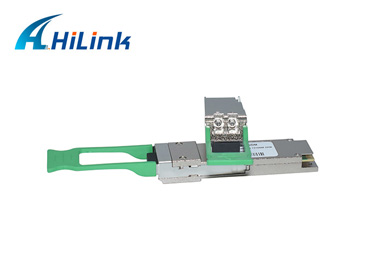What Is the Difference Between Optical And Electrical SFP?
Optical and electrical Small Form-Factor Pluggable (SFP) modules are both used for connecting networking equipment, such as switches and routers, to other networking devices. However, there are some key differences between these two types of SFPs that are worth exploring.
Optical SFPs use fiber optic cables to transmit data between networking devices. These cables use light to transmit data, which makes them less susceptible to interference than copper cables. Optical SFPs are often used in long-distance networking applications where copper cables would be impractical or ineffective. They are also used in high-bandwidth applications where copper cables cannot keep up with the data throughput requirements.
Hilink 200G QSFP56 SR4 Optical Transceiver
Electrical SFPs, on the other hand, use copper cables to transmit data. They are typically used in shorter-distance networking applications, such as connecting switches and routers within a data center or office building. Copper cables are less expensive than fiber optic cables, which makes electrical SFPs a more cost-effective solution for shorter-distance networking applications.
One of the main differences between optical and electrical SFPs is the type of data transmission they use. Optical SFPs use light to transmit data, while electrical SFPs use electrical signals. Light is faster than electrical signals, which means that optical SFPs can transmit data at higher speeds than electrical SFPs. This makes optical SFPs a better choice for high-bandwidth applications.
Another difference between optical and electrical SFPs is the distance they can transmit data. Optical SFPs can transmit data over longer distances than electrical SFPs. This is because fiber optic cables are less susceptible to attenuation (signal loss) than copper cables. Optical SFPs can transmit data over distances of up to several kilometers, while electrical SFPs are typically limited to distances of less than 100 meters.
Optical and electrical SFPs also differ in terms of their power consumption. Optical SFPs consume less power than electrical SFPs, which makes them a more energy-efficient solution. This is because optical SFPs do not require any electrical power to transmit data. Instead, they rely on the light generated by the SFP to transmit data.
Another difference between optical and electrical SFPs is their cost. Optical SFPs are typically more expensive than electrical SFPs. This is because fiber optic cables are more expensive than copper cables, and optical SFPs require additional components, such as laser diodes and photodiodes, to transmit and receive data.
In terms of installation, optical and electrical SFPs are fairly similar. Both types of SFPs are hot-swappable, which means that they can be installed and removed without shutting down the networking equipment. This makes it easy to replace or upgrade SFPs as needed.
Overall, the choice between optical and electrical SFPs depends on the specific needs of the networking application. Optical SFPs are better suited for high-bandwidth, long-distance applications, while electrical SFPs are more cost-effective for shorter-distance networking applications. Ultimately, the decision between these two types of SFPs will depend on factors such as data throughput requirements, distance requirements, and budget constraints.
Hilink is an optical transceiver supplier and distributor that provides a wide range of services to customers. In addition to offering high-quality optical transceivers, Hilink provides information on cost and price lists, and generates quotes to ensure they receive the best price possible.
Furthermore, Hilink prioritizes timely delivery to ensure customer satisfaction. For those interested in purchasing in bulk, Hilink offers wholesale options and a catalog of products to choose from. Please contact us to buy.





评论
发表评论